Imagine going for a stroll on the Noland Trail, taking in the sights and sounds of nature all around you. As you near the beautiful Lions Bridge, you hear lots of young voices. Rounding the corner, you come across what appears to be some sort of field trip. There are students all around! Some are in waders. Others are gathering around a table, using strange-looking instruments. Others appear to be playing some sort of game that looks like fishing on land. You have just stumbled upon students engaging in a Meaningful Watershed Educational Experience (MWEE).
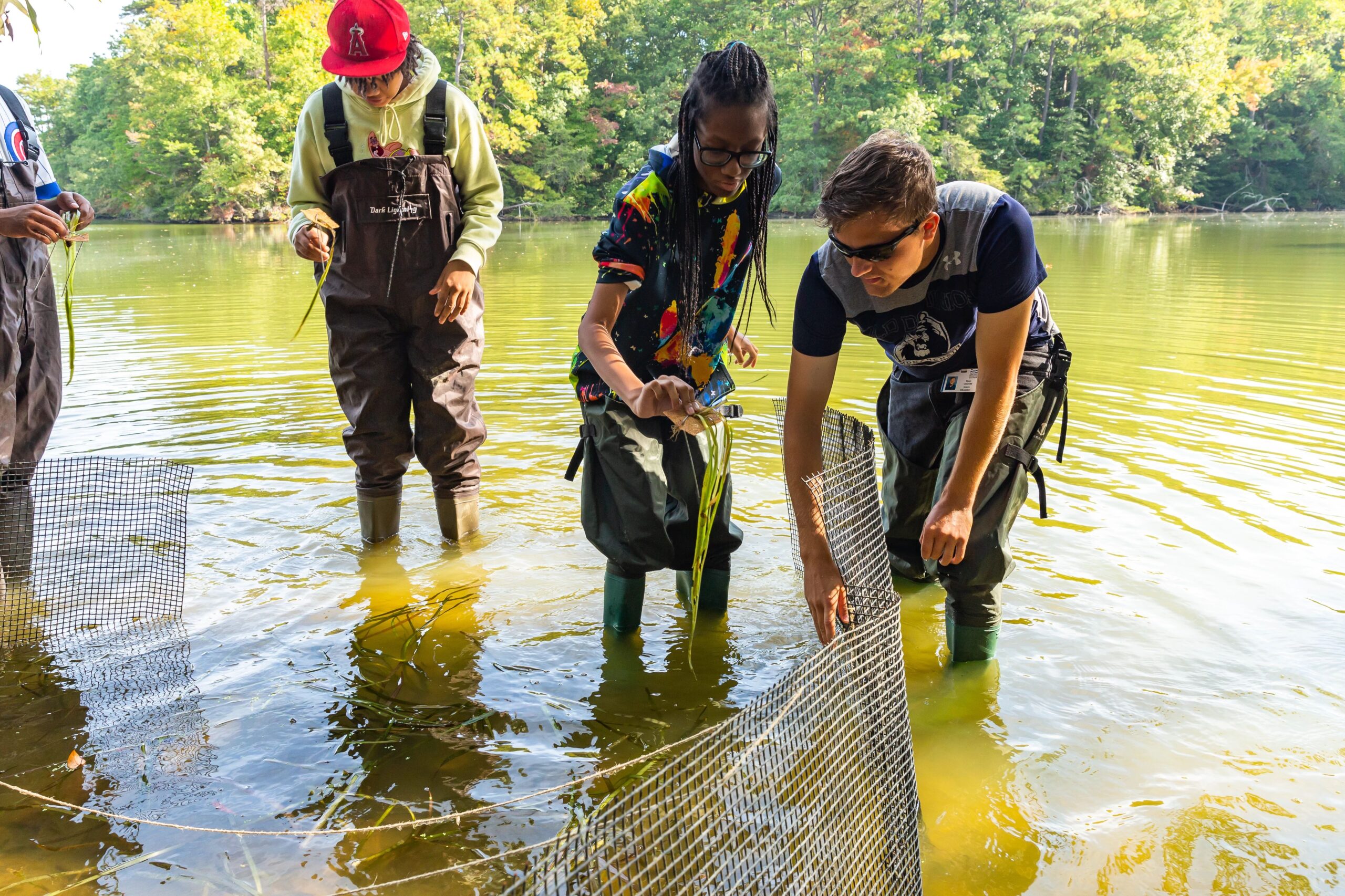
In 2021, The Mariners’ was awarded a three-year Bay Watershed Education and Training (B-WET) grant from the NOAA Chesapeake Bay Office. This project focuses on offering Newport News Public School ninth-graders hands-on learning. Students in this program grow native eelgrass in their classrooms, plant the grass in Mariners’ Lake as part of a restoration project, and lead an action project at school or in the area. Through the B-WET program, students are at the center of nature-based solutions in this community, learning to be environmental stewards.
The Mariners’ Museum and Park has the opportunity to interact with students in Biology and Environmental Science classes for this program. Each semester will bring new students forming new connections. In the fall, the Education team has been busy interacting with the biology students and preparing them to become the next generation of environmental stewards! While the initial classroom visits have come and gone, this post will highlight the other experiences that the students have had throughout the semester.
Field trips
In October, The Mariners Museum and Park hosted ninth-graders from seven public high schools across Newport News to participate in a MWEE with students engaging in a hands-on, place-based experience. For this second of three total interactions, students are rotating through three stations; planting aquatic grasses in Mariners’ Lake, water quality testing, and learning about habitat stability with NOAA’s Monitor National Marine Sanctuary.
Getting “wet” with B-WET
At the grass planting station, students are helping the Museum improve the health of Mariners’ Lake by planting native aquatic grass called Vallisneria americana, or eelgrass. These grasses help with sediment stability, increase oxygen in the water, and provide food for migrating waterfowl.
Students put on waders to stay dry and free of mud while they help plant the grasses. For many participants, waders are something they have never seen before. Many approach this first step with skeptical, wary looks. But once they have donned the waders, they are surprised by how much they like them! The students have loved taking their pictures and even doing TikTok dances in them! Some have even asked, “Can I keep these so I can wear them to school?”
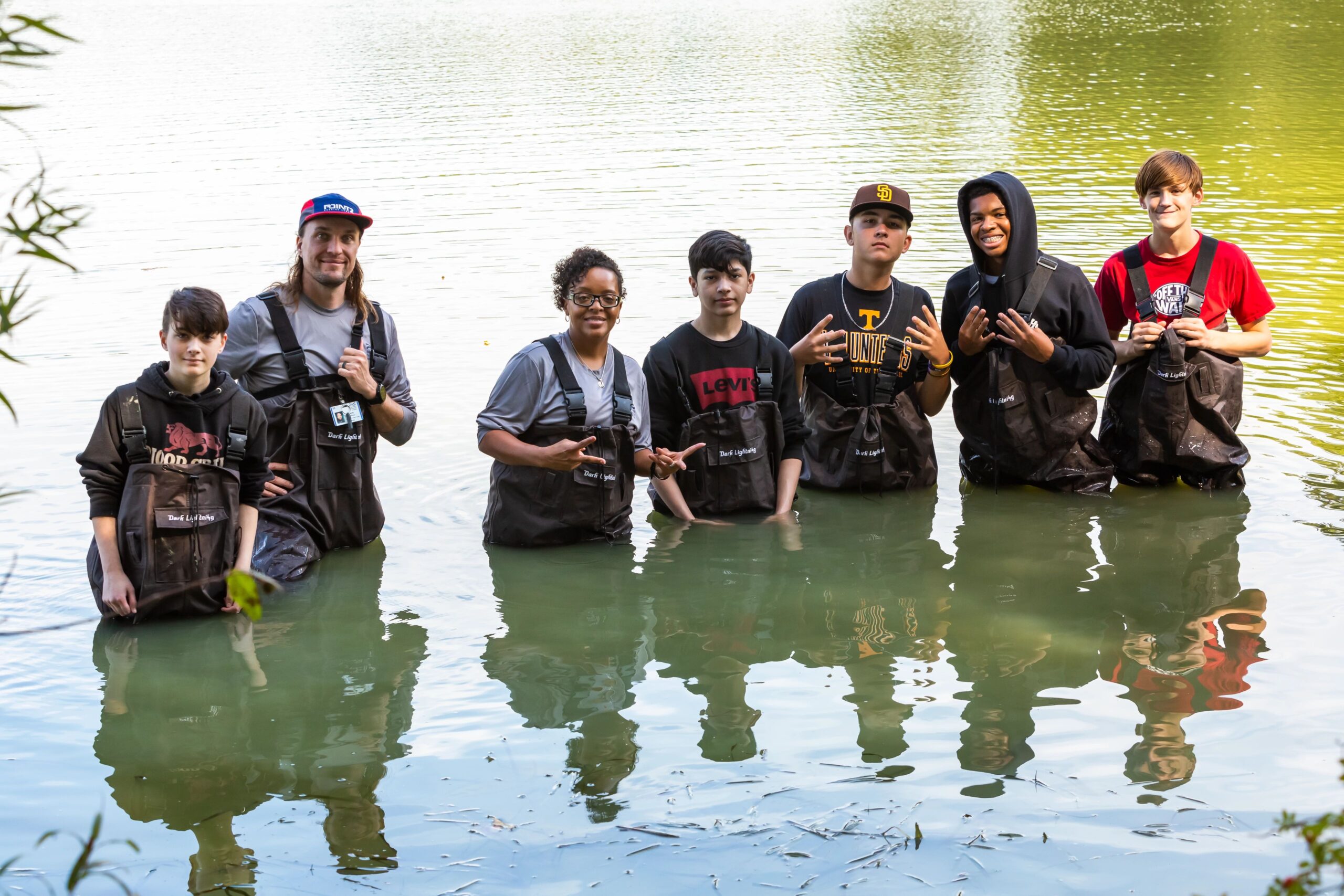
With the waders on, then it is time to plant! If anyone has witnessed the planting portion of the outdoor trips, it is clear this is the favorite part of the students’ experience. They have had so much fun tromping around, discovering new things in the water! It is impressive to watch them stumble upon a shell and ask all sorts of questions about what it is they have found. Students often say, “Can I plant another grass? This is so much fun!”
Testing the waters
For the second station of the field trips, students are testing the water quality of Mariners’ Lake to obtain data on the Lake’s overall health. Students measure parameters such as dissolved oxygen, turbidity, and pH to help determine the Lake’s current state and assess whether it is a good planting spot for their grasses. At this station, students learn how to use scientific equipment and form conclusions based on the data they collect.
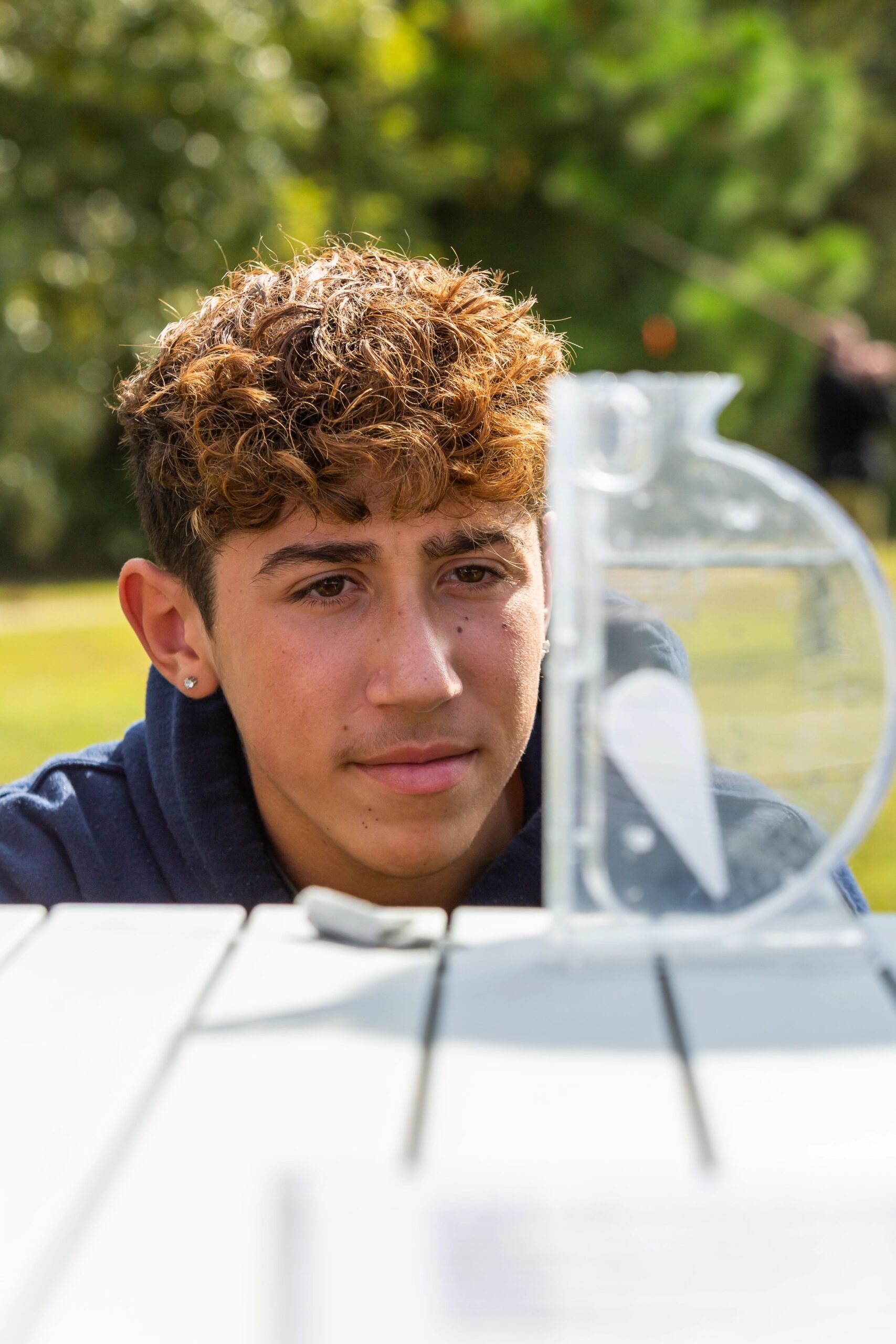
This part of the experience is an opportunity for students to reinforce their knowledge of water quality. Many of the students previously participated in another MWEE in sixth grade that involved learning about water quality. Through this portion of the visits, the students can increase their understanding of environmental parameters that can help determine the future health of Mariners’ Lake.
Casting a line with NOAA
Although fishing on land and the Jenga game might appear a bit odd on the visits, they serve a larger purpose! For the third station for the trips, students work with representatives from NOAA’s Monitor National Marine Sanctuary to learn about ecosystem stability.
While fishing on land, students get to learn how introducing non-native species to a new environment can very quickly take a turn for the worse, throwing off the entire ecosystem. During Jenga, students see how long an ecosystem can last when vital species are removed. Both experiences teach students the importance and value of maintaining a healthy environment.
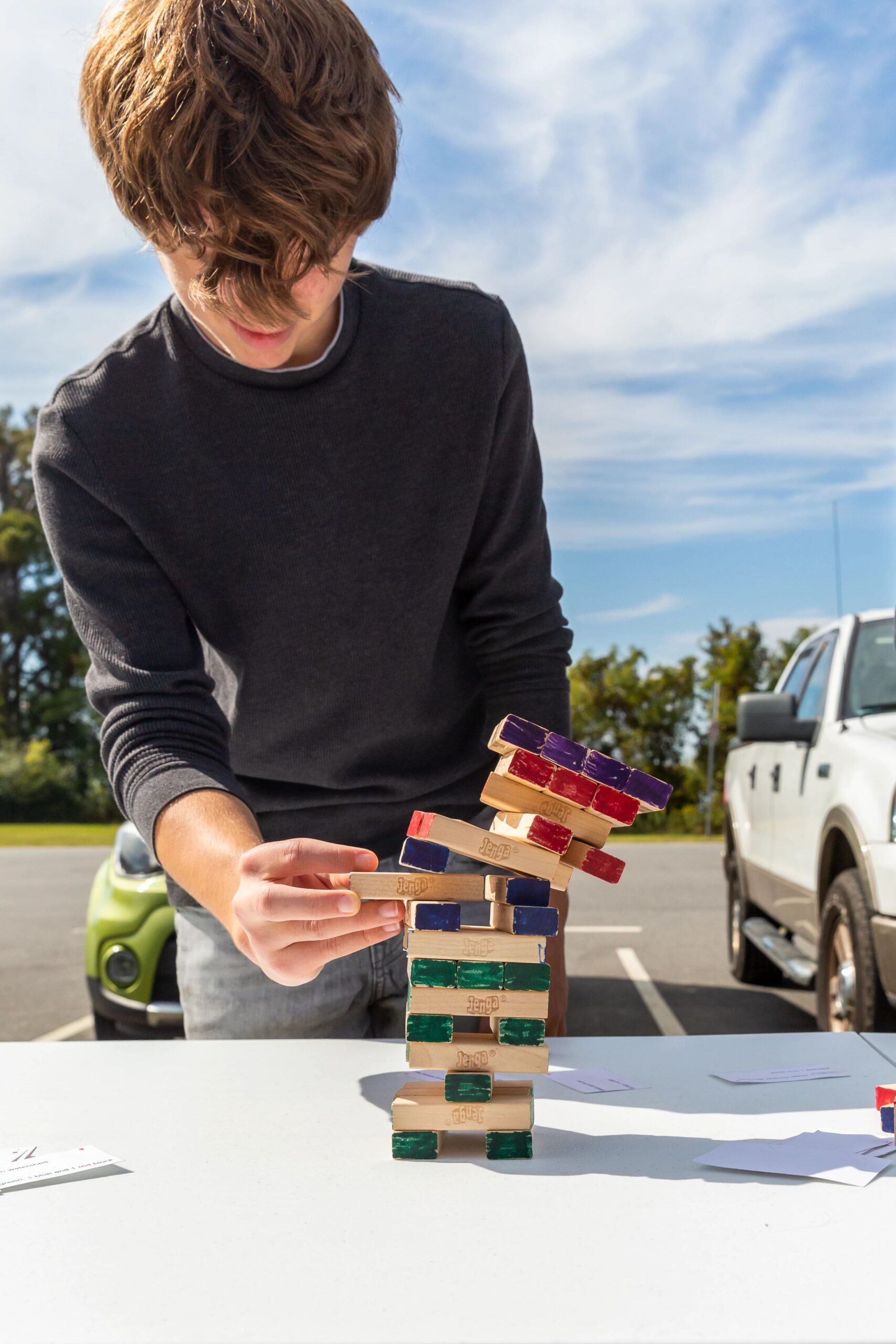
November visits
Following the field trips, the Education team has been busy going back into the classrooms to visit with the B-WET students one last time for the semester. This visit aims to tie a bow on the students’ experience. While in the classroom, students engage in interactive activities such as analyzing and graphing data on Mariners’ Lake and taking a VR dive to USS Monitor’s shipwreck!
The Mariners’ hopes these activities inspire students to take further action in their community and develop a project to help improve the environment’s health. In the past, students have worked on various projects ranging from planting native plants in recycled items to bringing awareness to pollution that enters storm drains. Through these efforts, the Chesapeake Bay can be a healthier place.
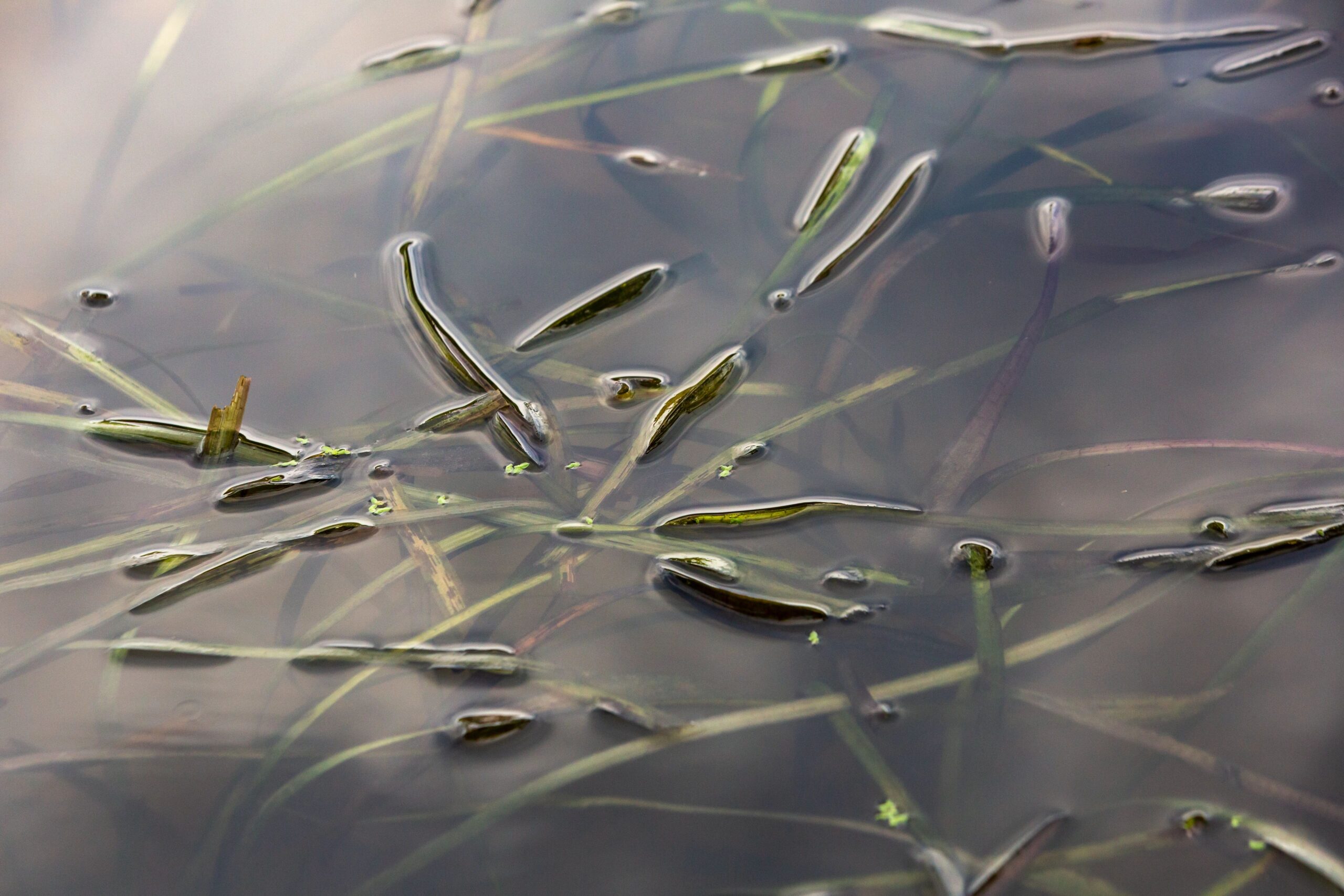
Halfway Mark
As we reach the halfway point of the project’s second year, the Education team is excited to share some classroom updates! For the fall semester, the B-WET team interacted and connected with 1,466 students and 23 teachers across the seven public high schools in Newport News. We look forward to serving even more students in the spring with students in environmental science classes. Each interaction we have with our students is a chance to help them feel connected to their community. The hope is that this program breaks down barriers, provides career ideas, and shows students they are valued in the community.